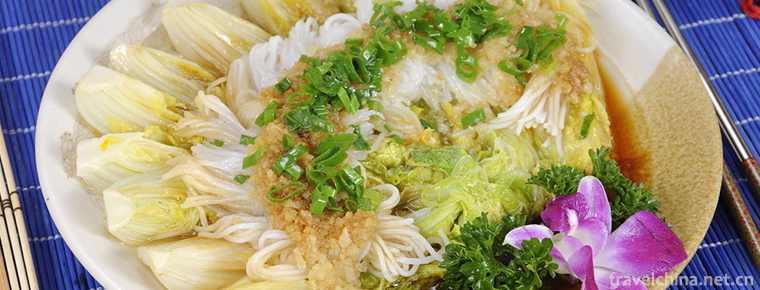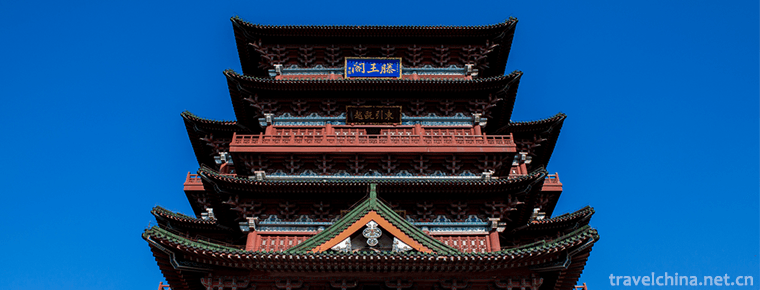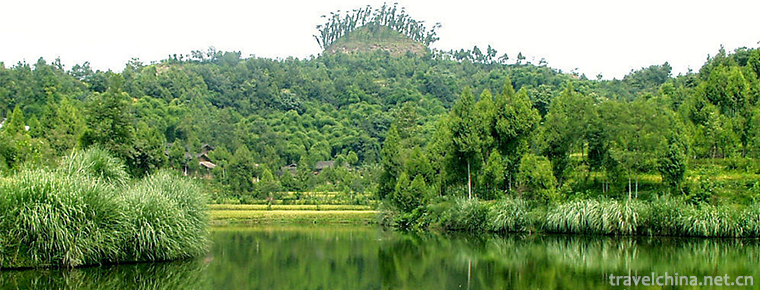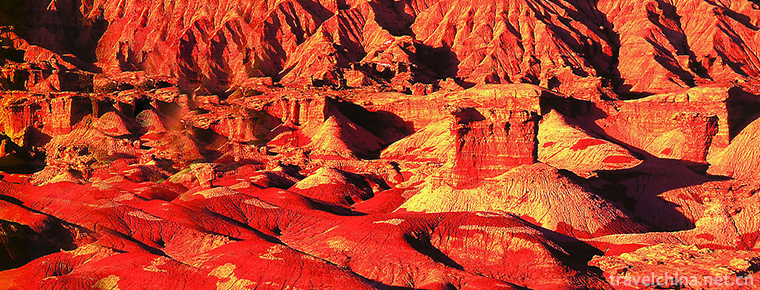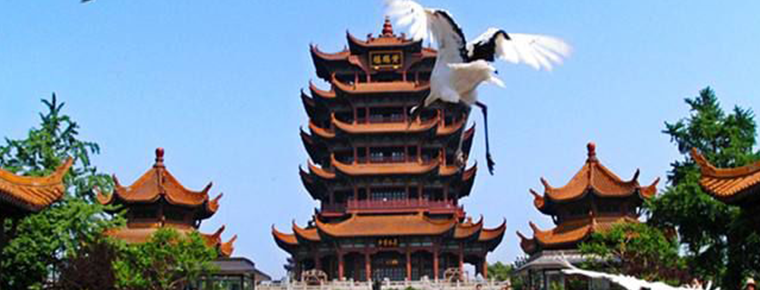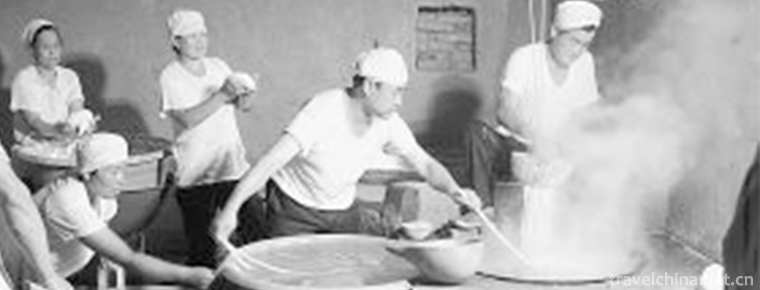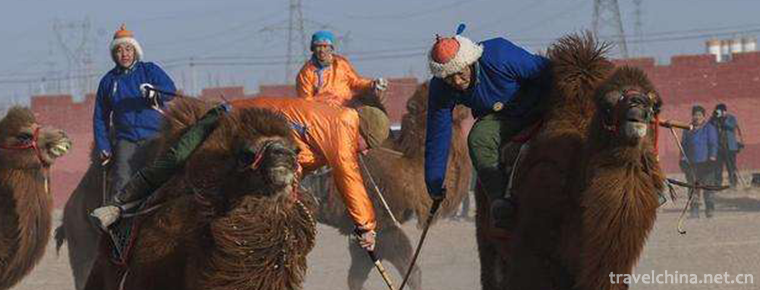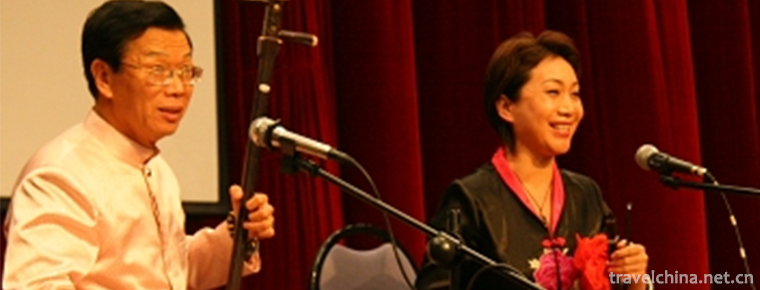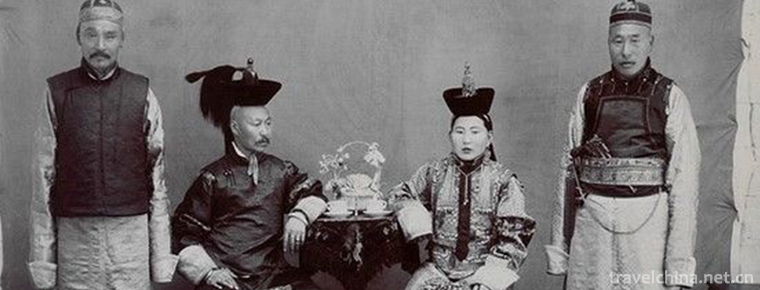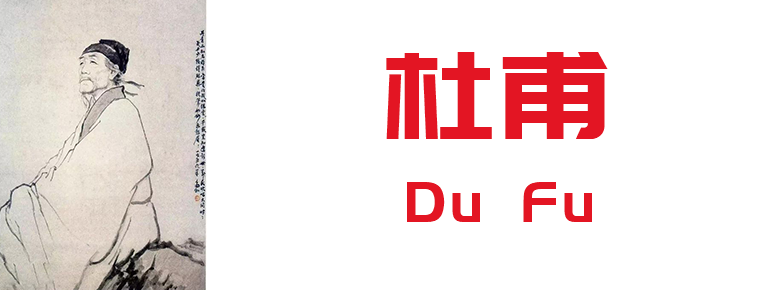Liushi Manorial Museum
Liushi Manorial Museum
Dayi Liushi manoral museum is located at No.15, Jingui street, Anren Town, Dayi County, Chengdu City, Sichuan Province. It is one of the important historical sites and representative buildings in modern China. The museum was founded in October 1958; in 1958, it was officially planned to build Dayi landlords' manor Museum; in early 1997, "Dayi landlord manor exhibition hall" was officially renamed as "Dayi Liu manor Museum".
Dayi Liu manor Museum covers an area of more than 70000 square meters, with a building area of 21055 square meters, which is the architectural style of Bazi in Western Sichuan. The buildings, collections, clay sculptures and remains of the museum are important objects for understanding and studying the politics, economy and culture of China's semi colonial and semi feudal society, as well as the history of warlords, folklore and modern residential buildings in Sichuan, and also a cross-section of the development history of modern Chinese society.
In 2001, it was rated as a national AAAA tourist attraction by the National Tourism Administration, and was rated as a national third-class Museum by the State Administration of cultural relics in 2009. It is a national key cultural relics protection unit, an excellent patriotism education base of national cultural relics system, and a national youth education base.
Historical evolution
Liu's manor complex was built in the late Qing Dynasty and completed in the late Republic of China.
In 1932, Liu Wencai built the south of the manor.
In 1942, Liu Wencai built the northern part of the manor for himself and his brother Liu Wenhui.
In 1932, Liu Wencai, who had been the general tax office of Xufu (Yibin) and director of the tobacco and wine public sales Bureau, returned to his hometown and built a manor on a large scale.
In 1958, Dayi landlord manor exhibition hall was officially established. In October of the same year, Dayi landlord manor exhibition hall was formally established. After the Third Plenary Session of the 11th Central Committee of the CPC, it was on the right track of museum development.
In 1982, the museum began to collect and sort out the documents and materials in the museum and compile the museum records.
In 1984, the exhibition hall of landlord manor was transferred from Chengdu to Dayi County.
In May 1993, the landlord manor was named as the third batch of Chengdu patriotism education bases by Chengdu municipal Party committee and municipal government.
On August 30, 1995, it was named the patriotic education base of Dayi County.
In November 1996, as one of the important historical sites and representative buildings in modern times of China and Tong, it was announced as one of the fourth batch of national key cultural relics protection units by the State Council.
In early 1997, "Dayi landlord manor exhibition hall" was officially renamed "Dayi Liu manor Museum". In May of the same year, Liu's manor was awarded the title of "excellent patriotism education base of national cultural relic system" by the State Administration of cultural relics.
In 1999, Dayi Liu's manor museum was listed as one of the six priority scenic spots by Sichuan Provincial People's government, and was listed in the master plan of Sichuan tourism development.
In May 2000, Dayi Liu manor museum was named the national youth education base by the Central Committee of the Communist Youth League.
In November 2001, Dayi Liu's manor was rated as a national AAAA tourist attraction by the National Tourism Administration.
In May 2009, Liu's manor was announced as a national third-class Museum by the State Administration of cultural relics.
architectural composition
Dayi Liu manor museum is the architectural style of Bazi in Western Sichuan. The Museum covers an area of more than 2107 square meters between the north and the south. The old manor is an irregular polygon, surrounded by 6-meter high wind and fire brick walls, 7 gates, 27 patios, more than 180 houses and 3 gardens. Inside the manor, there are heavy walls and alleys, thick doors and iron locks, and the secret rooms are in disorder. The whole manor is like a dark labyrinth building. There are rectangle, square, trapezoid, rhombus and other shapes; there are hundreds of ornaments such as carved door wire. The interior of the manor is divided into hall, living room, reception room, accounting room, employment yard, rent collection yard, granary, secret Treasury, water prison and Buddha Hall, moon watching platform, Xiaoyao palace, garden, orchard, etc.
Exhibition
The basic display of the museum is composed of preface hall, employment yard, Liu Wencai's living scene, large clay sculpture "Rent Collection Yard", manor cultural relics museum and so on.
The Museum of Liu's manor in Dayi has formed five basic exhibitions:
1. The restoration display of Liu Wencai and his family's living scene in the manor's husband's hall, and the large clay sculpture "Rent Collection Yard" group sculpture.
2. The folk customs exhibition of the West Sichuan Folk Museum, which is held at the old site of the manor new residence, reproduces the folk customs in the production and life of the people in Western Sichuan.
3. Display the excellent collections of the manor Cultural Relics Museum held in Liu Wencheng mansion.
4. The restoration exhibition of Liu's ancestral residence was held in the original site of Laowuji, the birthplace of Liu's family, in 2003.
5. The sculpture of folk houses in Western Sichuan and the display of modern calligraphy and painting in the former site of Liu Wenzhao mansion.
Main attractions
Laolaoguan
When Liu Wencai was alive, ordinary people were not allowed to enter her husband's hall. On the left side of the manor gate is the "farmhouse", and on the right side are "western style living room" and "Chinese style living room". Going forward is Liu Wencai's inner garden. Walking inside is Liu Wencai's inner courtyard. There is a longevity hall in the inner courtyard, which worships the spiritual throne of Liu's ancestors. On the right side of the longevity hall is a room with two entrances. There is a magnificent large dragon bed in the room. The gilded dragon bed covers an area of 9 square meters and is composed of 4 columns, 4 doors and bed surface.
Rent Collection House
"Rent Collection House" is displayed in Liu Wencai manor, Dayi County, Sichuan Province. It was created from June to October 1965. It is a large modern clay sculpture group of China. The author is Sichuan Academy of fine arts and folk artists.
According to the situation of the landlord's rent collection at that time, the "Rent Collection House" was conceived and created on the spot. It was composed of seven groups of images: paying rent, checking rent, wind Valley, fighting, accounting, forced rent and resistance. The whole process of rent collection, which is the main means of landlords' exploitation of peasants, is shown in the form of continuous plots. A total of 114 real size characters are created.
"Rent Collection House" was reproduced and exhibited in Beijing from 1965 to 1966, which caused great repercussions. Since then, he has exhibited in Albania and Vietnam. In 1988, he toured Japan with a copy of the new copper plated FRP material.
Miss building
Miss building, also known as "xiulou", is located in the north of the rent collection courtyard and the east side of the main gate of the husband's hall. Miss building is the courtyard of the courtyard. The columns on both sides of the gate are cinnabar. The rectangular white porcelain plate inlaid above the lintel has the words "Xiang Cheng Wu Fu". The top of the board is a relief white peony, which is elegant. It is a brick and wood structure, all of which are made of green brick and white line column wall frame, especially exquisite and unique. The six sides of the zanjian roof permeate the Chinese and Western architectural style of the semi feudal and semi colonial period of the 1920s and 1930s.
Value of cultural relics
The Museum of Liu's manor in Dayi witnessed the social and historical changes, and showed the architectural skills and traditional rural culture in Western Sichuan in modern times. The buildings, collections, clay sculptures and remains of the museum are important objects for understanding and studying the politics, economy and culture of China's semi colonial and semi feudal society, as well as the history of warlords, folklore and modern residential buildings in Sichuan, and also a cross-section of the development history of modern Chinese society.
The whole manor is a group of Chinese and Western style buildings. It not only has the legacy of Chinese feudal mansion, but also embodies the closed social characteristics of feudal society, reflects the feudal order and the hierarchical relationship between the superior and the inferior, and absorbs the characteristics of Western castles and church buildings, which are particularly prominent in the new residence buildings. The main style of manor architecture embodies the traditional Chinese aesthetic orientation, and integrates the western aesthetic characteristics in details. This Chinese and Western Manor building complex is mainly composed of brick and wood structure, reflecting the development process of modern residential buildings in Western Sichuan in the 1920s and 1930s. It is not only a typical architectural form and style of modern Sichuan landlord manor, but also a group of residential buildings with typical local characteristics formed by absorbing western architectural civilization and combining with traditional Chinese architectural culture, It has high historical, artistic, cultural relics and scientific and technological value.
Collection
As of March 2015, there are more than 27000 cultural relics and collections in Dayi Liu's manor Museum; 1848 cultural relics above grade III, including 15 national first-class cultural relics, 21 second-class cultural relics and 1813 third-class cultural relics. It includes a set of red sandalwood inlaid marble tables and chairs in the Qing Dynasty. Among them, eight chairs are 108 cm high, 99 cm wide and 60 cm deep, inlaid with 27 beads of various colors and surrounded by flower patterns decorated with mother of pearl.
The museum has a large number of cultural relics and rich connotations, such as the relics of the Taiping Heavenly Kingdom, such as Chinese style red sandalwood and mother of Pearl marble furniture, nine story hollow carving ivory ball, 13 floor hollow carving ivory tower, clay sculpture "Rent Collection Yard", Mr. Zhang Daqian's couplets, and Liu Wen's colorful pasted golden dragon holding pillars to step back into a big flower bed. Among them, there are hundreds of maps of military operations and administrative divisions during the period of "defense area system" of Sichuan warlords, as well as hundreds of tax revenue, land tax pre levy (from 1930 to 1976), and hundreds of supporting documents for borrowing military rates. There are a large number of physical objects reflecting the cruel economic exploitation of farmers by the landlord class in modern times, such as the land lease, house lease, and so on There are thousands of books, tenant lists, land tax receipts, tax receipts and so on. There are all kinds of gold and jade inlaid furniture, a large number of gold and silver jewelry, antiques, calligraphy and paintings.
Tourism information
traffic
Bus: No.11, No.13, No.15
Automobile: Chengdu Wenjiang Chongzhou Dayi
Express highway to Dayi County (52 kilometers), and then through 12 kilometers of secondary road to Anren Town, manor is located in Anren town.
Opening Hours
Opening Hours:
Summer (May 1 - October 7)
Ticket time: 9:00-17:00 (closed at 17:30)
Winter (October 8 - April 30)
Ticket selling time: 9:00-16:30 (closed at 17:15)
admission ticket

-
Vegetable party
Vegetable party (alias Su Chunjuan) is one of the common local traditional snacks in Guiyang. It can be seen almost everywhere in the streets of Guiyang. This dish is crisp.
Views: 176 Time 2018-11-05 -
Pavilion of Prince TengTengwang pavilion
Tengwang Pavilion, one of the three famous buildings in the south of the Yangtze River, is located on the East Bank of Ganjiang River along the Yangtze River Road in the northwest of Nanchang City, Ji.
Views: 166 Time 2018-12-08 -
Hometown of Zhu De
Zhude Hometown Scenic Spot: National AAAAA Tourist Scenic Spot, National Key Cultural Relics Protection Units, National Patriotic Education Demonstration Base, National Anti-corruption Education Base,.
Views: 267 Time 2018-12-12 -
Devil City
The Devil City is also known as the Wind City of Urho. Wuerhe Mining Area in the lower reaches of Jiamu River, located in the northwest margin of Junggar Basin.
Views: 87 Time 2019-02-07 -
Legend of Yellow Crane Tower
The legend of the Yellow Crane Tower has a long history, and has been accompanied by the repeated destruction and construction of the Yellow Crane Tower.
Views: 107 Time 2019-05-04 -
Longkou Fans Traditional Handicraft Production Techniques
In the late Ming and early Qing Dynasties, Zhaoyuan people created a new technique of making mungbean vermicelli, which was divided into three manual operation processes: powder pushing, powder leakin.
Views: 245 Time 2019-05-14 -
Mongolian camel ball
The intangible cultural heritage is the manifestation and cultural space of various traditional cultures which are inherited from generation to generation and closely related to people's life. .
Views: 161 Time 2019-06-04 -
Miao Silver Jewelry Forging Techniques
Miao silver jewelry forging technology takes silver as raw material. The pattern and structure of silver jewelry have been carefully designed by the craftsmen. There are 30 processes from drawing to c.
Views: 156 Time 2019-06-05 -
Shandong Qinshu
Shandong Qinshu is one of the traditional folk art varieties in Shandong area, also known as "Xiaoqu", "Yangqin", "Shandong Yangqin", "improved Qinshu" and so o.
Views: 186 Time 2019-06-13 -
Tauk Taohu
Tao Ketaohu (May 13, 1864-April 1922), also translated as "Tao Ketao", Fuer Zhijin, Mongolian, the former Banner of Guoerros in Zhelimu League, Mongolian subordinate aristocrat of Nezhazazak.
Views: 97 Time 2019-06-18 -
Du Fu
Du Fu (712 - 770 years), Zi Zi Mei, from the Shao Ling old man, Tang dynasty Great realistic poets, and Li Bai It is called "Li Bai". Originally from Xiangyang, Hubei, Henan county. With two.
Views: 413 Time 2019-09-07 -
Neijiangs location
Neijiang City is located in the southeast of Sichuan Basin and the middle of the lower reaches of Tuojiang River. Chongqing in the East, Chengdu in the west, Zigong, Yibin and Luzhou in the south, Ziyang and Suining in the north. Its geographical location.
Views: 340 Time 2020-12-16
